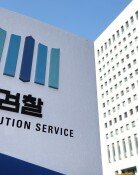Korea`s Bad Bank KAMCO Returns
Korea`s Bad Bank KAMCO Returns
Posted February. 17, 2009 04:52,
In the wake of the global economic crisis, bad banks that liquidate non-performing assets have reentered the picture, namely Korea Asset Management Corporation, or KAMCO.
KAMCO was modeled after the U.S. Resolution Trust Corp. when the currency crisis hit Korea. The U.S. company has been abolished, so KAMCO is considered one of the few remaining bad banks in the world.
○ The troubleshooters return
The bad loan ratio of domestic banks was 1.11 percent in December last year, showing banks need to reduce their bad loans. Though the ratio is still far lower than that of American banks (2.23 percent), the rapidly increasing delinquency rate should prompt Korean banks to deal with their bad loans preemptively.
Against this backdrop, many experts say KAMCO should assume the role of the firefighter to put out the fire that could burn Koreas economy.
The National Assembly until early last year said KAMCO should be abolished, but has recently allowed the government to additionally invest 400 billion won (280 million U.S. dollars) into the company. That means KAMCOs role in dealing with bad loans has increased.
KAMCO held its first meeting to purchase project financing loans Friday, and has negotiated with Koreas financial institutions since then.
After conducting an internal analysis, KAMCO developed three economic scenarios categorized as best, worst and medium and set up countermeasures based on each scenario. If the bad loan amount reaches 70 trillion won (48 billion dollars) as certain experts warn, KAMCOs role will get bigger.
○ Will KAMCO take the initiative?
In 1998, the Korean economy faced its worst economic crisis after its foreign exchange reserves ran out and several large corporations collapsed.
The government established KAMCO to take charge of purchasing non-performing loans since it felt an urgent need to strengthen the soundness of financial institutions that supported the real economy.
A decade ago, KAMCO raised 39.4 trillion won (20 billion dollars) by issuing bonds and drawing contributions from financial institutions and purchased 111 trillion won (55 billion dollars) in non-performing loans. As KAMCO purchased bad loans, domestic banks teetering on the verge of collapse due to faltering large corporations could be reborn as clean banks.
KAMCO, however, is unlikely to purchase bad loans with massive public funds, as it did when the Asian currency crisis hit the nation.
Most of all, KAMCO cannot take the initiative in purchasing bad loans. In 1998, its acquisition strategy team could swiftly evaluate bad loans held by banks due to the urgent need to resolve bad loans.
The ability of banks to evaluate bad loans, however, has significantly improved to rival that of KAMCO. Moreover, domestic banks are not as pressed for time as they were in the past, thus weakening KAMCOs bargaining power. It is also difficult for the government to spend money to purchase bad loans.
○ Precise evaluation key to success
KAMCO has strived to purchase bad loans, but as Washingtons attempt to establish a bad bank has failed, more experts question if bad banks are effective in resolving non-performing loans.
The United States has not clarified which organization will set the price and who will deal with the issue over impaired capital.
It is no different in Korea. The government has promised funds for banks on the condition of no state intervention in management. Given that, it will be hard for KAMCO to invest a large amount of public funds to help domestic banks maintain their financial health.
KAMCO CEO Lee Chol-hwi said, If KAMCO hesitates, the financial crisis could burn the whole economy. Our role should be expanded since Korea should handle bad loans swiftly.
jaeyuna@donga.com



![“한동훈, 정치생명 걸고 무소속 출마해 평가받는 것 고려할만”[정치를 부탁해]](https://dimg.donga.com/c/138/175/90/1/wps/NEWS/IMAGE/2026/01/19/133186982.1.jpg)


![[한규섭 칼럼]왜 여당 지지율은 떨어지지 않는가](https://dimg.donga.com/c/138/175/90/1/wps/NEWS/IMAGE/2026/01/19/133189257.1.png)
